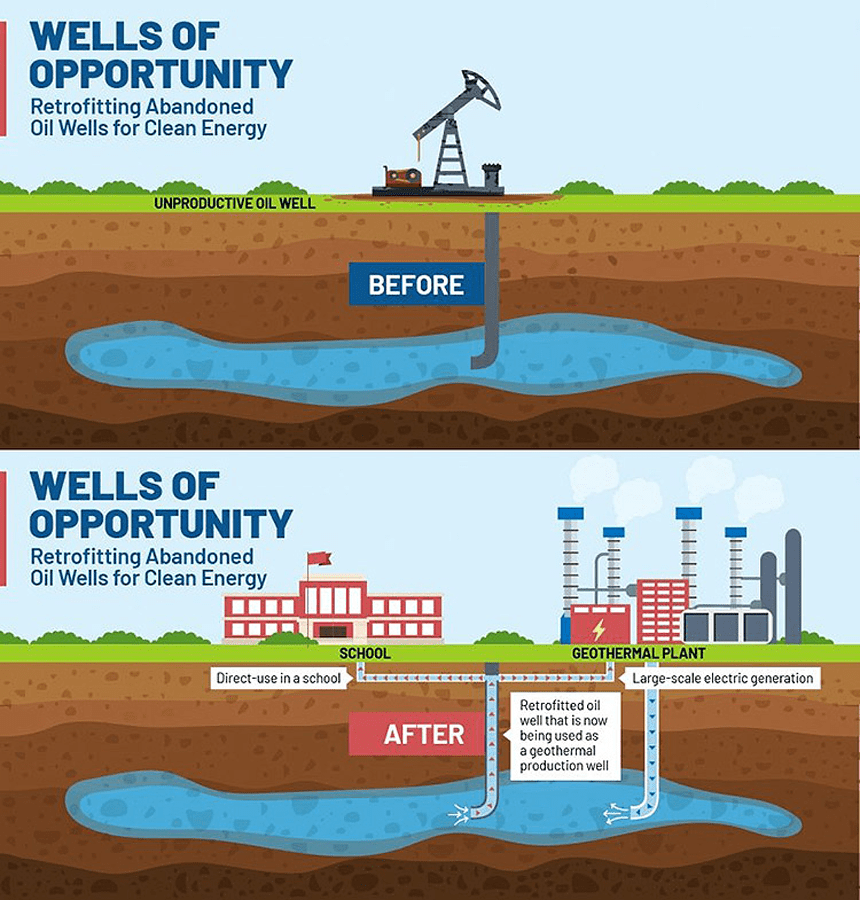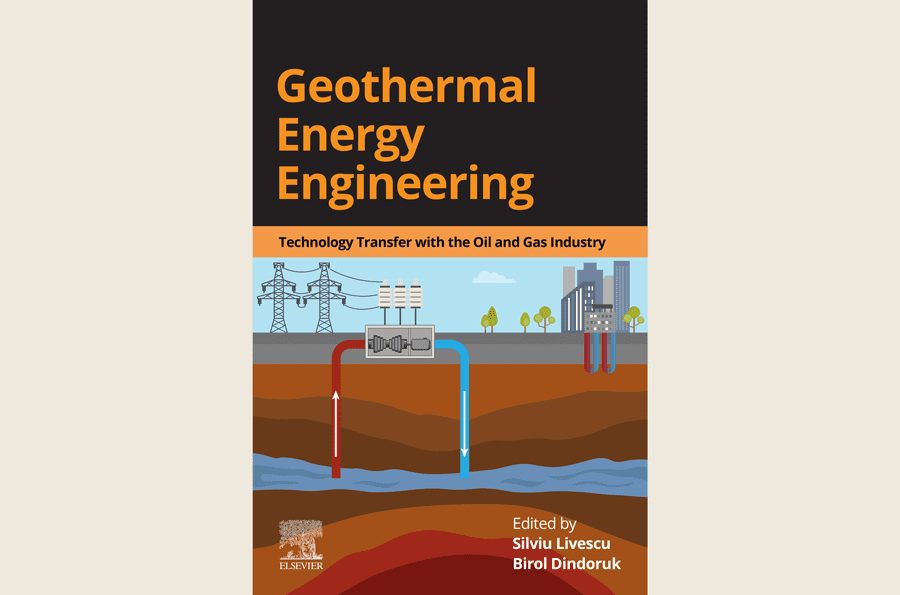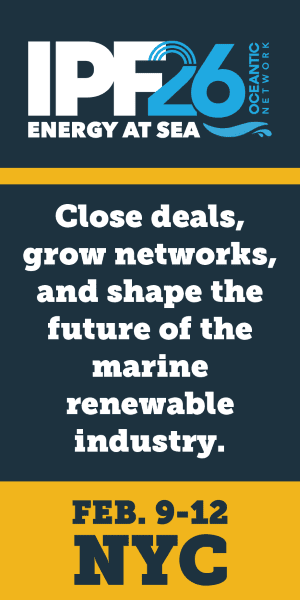In the first chapter of Geothermal Energy Engineering published by Elsevier, we explore the origins, historical development, and various types of geothermal systems, along with the challenges and opportunities in unlocking their full potential.
Geothermal energy, derived from the Greek words geo (Earth) and therme (heat), is a natural and renewable heat source located beneath our feet. Used for thousands of years – from ancient hot springs to modern heating and cooling systems – geothermal stands out from other renewables like solar and wind by offering a constant, 24/7 power supply, independent of weather conditions. However, despite its promise, geothermal currently accounts for less than 1% of the global energy supply, leaving a vast, untapped resource that could play a transformative role in our energy future.

The image was created by the DOE Geothermal Technologies Office and can be accessed at: https://www.nrel.gov/news/features/2023/full-steam-ahead-unearthing-the-power-of-geothermal.html (retrieved January 27, 2024).
There is a strong synergy between geothermal energy and oilfield development, with advancements in drilling and reservoir management revolutionizing the heat production across conventional hydrothermal systems, enhanced geothermal systems, advanced geothermal systems, and hybrid systems. Technologies such as high-temperature, high-pressure drilling, hydraulic fracturing, and real-time reservoir monitoring – originally developed for the oil and gas industry – are now being adapted to extract heat from deeper, dry rock formations. Additionally, repurposing the existing oil and gas wells reduces the capital investment in well construction and infrastructure, accelerates the project development, and enables a seamless transition for skilled oilfield workers into the renewable energy sector.
As energy demand surges, driven by the continuous growth of Artificial Intelligence (AI), data centers, and electrification, integrating geothermal energy with all other resources will create a more balanced and sustainable energy mix. With continued innovation, knowledge transfer from the oil and gas industry, and strategic investments, geothermal has the potential to become a cornerstone of the global energy landscape, delivering reliable, low-carbon power for homes, industries, and entire cities.
The future of energy isn’t just above us – it’s beneath our feet. Let’s tap into it.
Meisong Yan is a Texas-licensed petroleum engineer with over 20 years of experience in data-driven asset development, M&A, divestiture, and CCUS. She has worked across PE-backed ventures and major E&P operators, authored a book (Fueling through the Pandemic, Reflections of Oil and Gas Industry in 2020), five SPE papers, and holds a UK patent with two pending U.S. patents. Passionate about community outreach, she serves on SPE’s Data Science and Engineering Analytics committee and volunteers with various organizations. Yan holds a B.S. from East China University of Science and Technology and an M.S. from Texas Tech, both in chemical engineering.
Congratulations and thank you to esteemed Editors Silviu Livescu and Birol Dindoruk on the publication of Geothermal Energy Engineering: Technology Transfer with the Oil and Gas Industry with Elsevier. Chapters are written by world-renowned subject matter experts who address practical applications optimized in the oil and gas industry that can be adapted to accelerate global geothermal energy production. Order now or find out more at Elsevier.
Dr. Silviu Livescu is the co-founder and CTO of Bedrock Energy, on a mission to transform the heating and cooling of buildings, using geothermal energy to radically reduce costs for people and the environment. Previously, he was a tenured faculty member of geoenergy science and engineering at the University of Texas at Austin, a pressure pumping chief scientist at Baker Hughes, a research engineer at ExxonMobil, a technical board director for the Society of Petroleum Engineers (SPE), and an SPE distinguished lecturer. Dr. Livescu has extensive product and technology research, development, and deployment experience in petroleum and geothermal drilling and construction, authoring 41 U.S. patents and patent applications and more than 100 papers and articles, including five chapters in the trailblazing “Future of Geothermal in Texas” report, and co-editing Elsevier’s book titled Geothermal Energy Engineering: Technology Transfer with the Oil and Gas Industry.
Dr. Birol Dindoruk is a professor and AADE-endowed professor in petroleum engineering at the University of Houston, United States. He was elected as a member of the National Academy of Engineering (NAE) for his significant theoretical and practical contributions to EOR & CO2 sequestration in 2017. Dr. Dindoruk is an honorary member of the Society of Petroleum Engineers (SPE), serves as an editor-in-chief of SPE Journal, and in the past served as an editor-in-chief of Elsevier’s Journal of Natural Gas Science and Engineering and Journal of Petroleum Science and Engineering. Dr. Dindoruk previously worked at Shell for 23 years as a chief scientist of reservoir physics, one of seven allotted in the company.
Dr. Ken Wisian, Major General, U.S. Air Force (retired), is Associate State Geologist and Associate Director of the Bureau of Economic Geology, Jackson School of Geoscience, The University of Texas at Austin. At the Bureau of Economic Geology, he leads a division of 50+ scientists and engineers working many areas of applied geosciences including geothermal energy, carbon sequestration, water resources, the environment, seismicity, and mineral resource exploration and mapping. Dr. Wisian is a geophysicist whose main research is in geothermal energy. Other research includes planetary geology/space exploration, the Search for ExtraTerrestrial Intelligence (SETI), and international relations. Dr. Wisian teaches Life in the Universe and Geothermal Systems. He also holds appointments in the Center for Space Research and Geological Sciences Department at UT Austin, is a charter member of the Center for Planetary Systems Habitability at UT Austin, and is a Fellow of the British Interplanetary Society.









